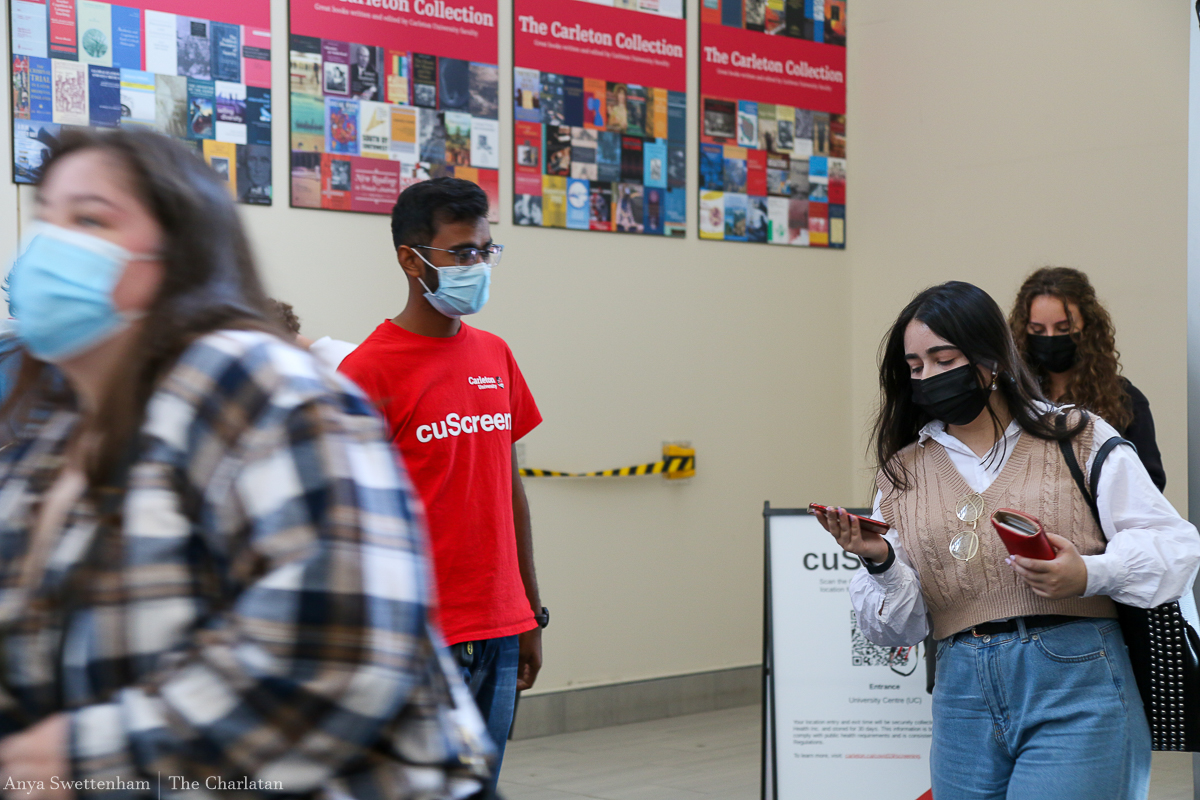
With the second school year now kicking off during the COVID-19 pandemic, Carleton University has had to implement a few new measures to keep its students, staff and faculty safe from the COVID-19 virus. Not all of these measures are useful.
Among useful and necessary precautions such as wearing masks, washing hands, maintaining a physical distance of two metres from others and providing proof of full vaccination, the university has also made a redundant attempt at contact tracing through self-screening with a QR code system called cuScreen.
How can Carleton expect every individual visiting campus to consistently fill out a self-screening document each time they visit a building or classroom? How can they expect everyone to be truthful when doing so?
According to the Carleton website, students will first need to prove they have the necessary vaccinations against COVID-19 before visiting campus and checking in at QR code locations. After strong recommendations from the Council of Ontario Medical Officers of Health (COMOH), all Ontario post-secondary institutions now require mandatory vaccination for all individuals involved in any in-person activities on or off-campus.
While mandatory vaccinations and providing proof of such is necessary and helpful to preventing the spread of COVID-19, consistent use of QR code screening is useless and creates a more dangerous environment for those on campus.
These QR code locations create crowds of people loitering around doors as I’ve seen in the first few days back at school.
How can physical distancing be encouraged and maintained during this return to campus if clusters of people are consistently vying to scan a QR code?

Recent research says 34 per cent of COVID-19 positive participants in the U.S. had denied having symptoms when asked by others and 55 per cent reported some level of concealment of their symptoms.
Even those who do try to answer the questions honestly face barriers. The My Thrive Health engine used to support the screening process is confusing, especially for visitors who have to jump through hoops just to be allowed to answer the screening questions.

QR code screening also requires a fast and reliable internet connection, which Carleton has struggled to maintain throughout campus with slow connection periods and total outages having occurred in the past.
While a paper version of the screening process is available, it does nothing to help the issue of traffic jams surrounding these QR code locations.
Carleton’s new QR code screening regulation promotes a false sense of security among students and staff. The idea of it is redundant and is just a bandwagon tactic to make it look like a whole other level of “protection” has been added— hygiene theatre, if you will.
Wear your mask, keep a distance from your peers, get your vaccinations and stay vigilant on your own time. That is doing your part to stop the spread.
Featured image by Anya Swettenham





